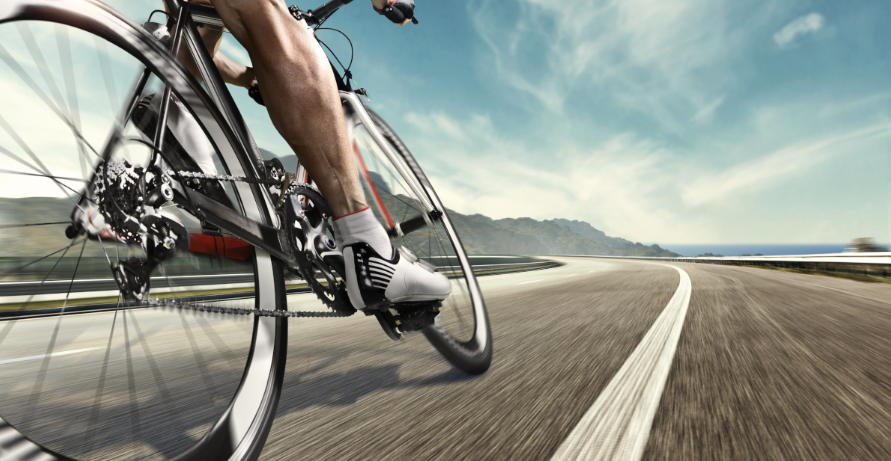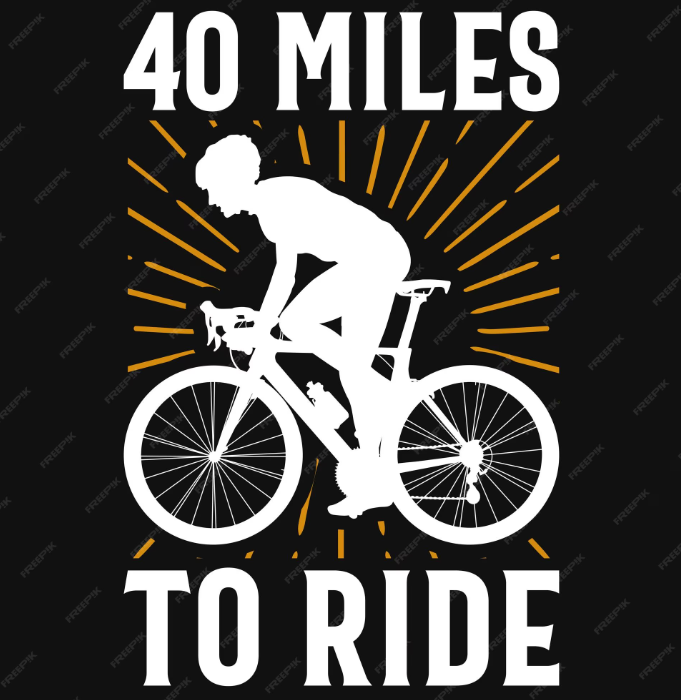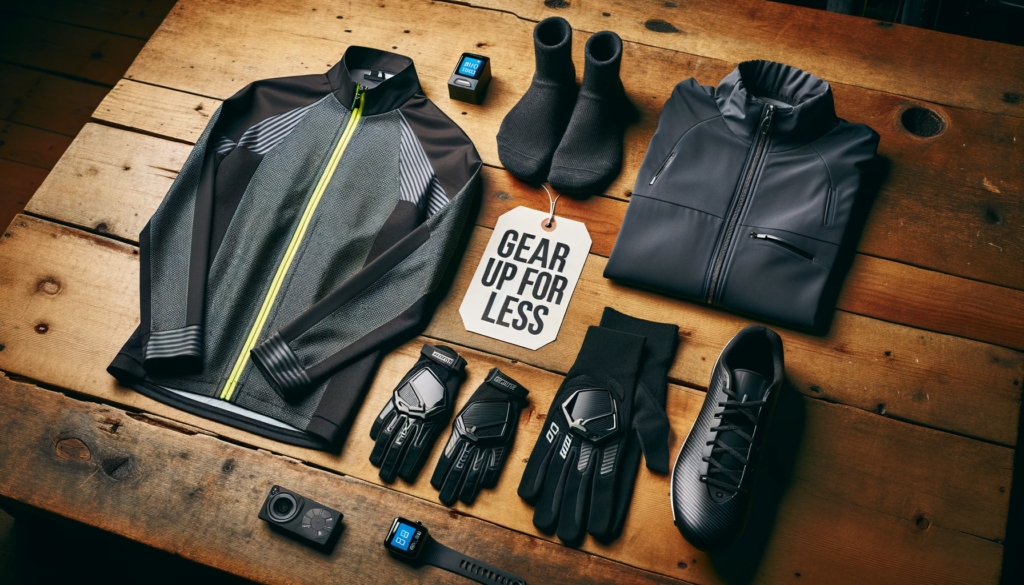It usually takes around 2-3 hours to cycle 40 miles. Cycling is a popular outdoor activity for both leisure and exercise purposes.
People of all ages and fitness levels enjoy the thrill and freedom of riding a bicycle. If you are planning to cycle a distance of 40 miles, one of the first questions that may come to mind is how long it will take to complete the journey.
The duration of this cycling trip can vary depending on several factors. These include your fitness level, terrain conditions, weather, and the type of bicycle you are riding. By considering these factors, you can get a rough estimate of the time it will take to complete a 40-mile cycling trip. We will delve deeper into the factors that determine the duration of such a journey to provide you with a clearer picture. So, let’s get started!
Factors That Affect Cycling Speed
When it comes to cycling, the speed at which you can cover a specific distance depends on various factors. These factors include your physical fitness level, the type of bike and gear you use, and the weather conditions you encounter during your ride.
Understanding how these factors affect your cycling speed can help you plan your rides more effectively and improve your overall performance. Let’s take a closer look at each of these factors.
Physical Fitness
Your physical fitness level plays a crucial role in determining how fast you can cycle 40 miles. The stronger and more conditioned your body is, the easier it will be to maintain a consistent and high-speed pace. Factors such as cardiovascular endurance, muscular strength, and overall flexibility contribute to your cycling performance.
Cardiovascular Endurance: A strong cardiovascular system allows your body to efficiently deliver oxygen-rich blood to your muscles, enabling them to work harder and for longer periods. Regular aerobic exercise such as running, swimming, or cycling can help improve your cardiovascular endurance.
Muscular Strength: Cycling requires the continuous engagement of various muscle groups, especially the quadriceps, hamstrings, and glutes. Strengthening these muscles through resistance training or performing exercises like squats and lunges can enhance your cycling power and speed.
Overall Flexibility: Good flexibility allows for a greater range of motion, enabling you to adopt a more aerodynamic and efficient cycling position. Incorporating stretching exercises into your routine, particularly for your lower back, hamstrings, and hip flexors, can help increase your flexibility and ultimately improve your cycling speed.
Bike And Gear
The type of bike and gear you use also influences your cycling speed. Investing in a high-quality bike that is suited to your cycling goals and terrain can significantly enhance your performance.
In addition, the right gear and accessories can improve your comfort and efficiency, allowing you to maintain a faster pace for longer periods.
Bike Type: Different types of bikes are designed for specific purposes, such as road biking, mountain biking, or hybrid biking. Each type has its advantages and disadvantages in terms of speed, stability, and handling. Choosing a bike that suits your intended use will make your ride more enjoyable and efficient.
Bike Fit: Ensuring that your bike is properly fitted to your body measurements is crucial for optimizing your speed and reducing the risk of discomfort or injury. Adjusting the saddle height, handlebar position, and cleat alignment to match your body proportions can improve your cycling efficiency.
Gearing: The gearing system on your bike determines the range of gears available to you. Selecting the appropriate gear based on the terrain and your desired speed can make uphill climbs easier and allow you to maintain a consistent pace on flat or downhill sections.
Weather Conditions
Weather conditions can have a significant impact on your cycling speed, requiring adjustments to your riding strategy. Factors such as wind, temperature, and precipitation can either work in your favor or pose challenges that affect your overall pace. Being mindful of the weather forecast can help you plan your ride and optimize your speed accordingly.
Wind: Cycling against a strong headwind can slow you down considerably, while a tailwind can boost your speed. Understanding wind direction and intensity can help you strategize your ride to take advantage of favorable wind conditions.
Temperature: Extreme heat or cold can affect your performance and comfort level during a ride. Staying properly hydrated and dressed for the weather can help you maintain your energy levels and prevent overheating or hypothermia.
Precipitation: Riding in wet or slippery conditions requires extra caution and adjustments to your speed. Being aware of the road surface and potential hazards such as puddles or reduced visibility can help you stay safe and maintain a steady pace.

Credit: www.amazon.com
Average Time To Cycle 40 Miles
Cycling is a popular sport and recreational activity that offers numerous health benefits. One common question among cyclists is how long it takes to cycle a specific distance. In this article, we will focus on the average time it takes to cycle 40 miles. The time it takes to cover this distance can vary depending on factors such as fitness level, terrain, weather conditions, and cyclist experience. Let’s dive into the average times for beginner cyclists, intermediate cyclists, and experienced cyclists to complete a 40-mile ride.
Beginner Cyclists
For beginner cyclists, completing a 40-mile ride can be quite challenging. It requires building up endurance and mastering proper cycling techniques. Since beginners might take breaks and ride at a slower pace, it’s difficult to provide an exact average time. However, a tentative estimate would be around 3 to 4 hours.
It’s important for beginners to gradually increase their cycling distance and pace to avoid fatigue and injury. To achieve this, incorporating trainings such as interval workouts and longer rides can help improve both speed and endurance. Additionally, focusing on proper nutrition and hydration can also contribute to faster cycling times.
Intermediate Cyclists
Intermediate cyclists have gained some experience and improved fitness levels compared to beginners. They have a good understanding of cycling strategies and can maintain a consistent pace throughout the ride. On average, intermediate cyclists can complete a 40-mile ride in around 2 to 3 hours.
To further improve their performance, intermediate cyclists can introduce more structured training plans that involve interval training, hill repeats, and longer endurance rides. By incorporating these training techniques and focusing on performance-based nutrition, intermediate cyclists can push themselves to achieve faster times.
Experienced Cyclists
Experienced cyclists are those who have been cycling for a significant amount of time and have a high level of fitness. They have mastered various cycling techniques, including pacing, drafting, and efficient pedaling. For experienced cyclists, covering 40 miles can be a relatively shorter endeavor. On average, experienced cyclists can complete a 40-mile ride in around 1.5 to 2 hours.
To further enhance their performance, experienced cyclists often engage in advanced training methods such as high-intensity interval training (HIIT), strength training, and long endurance rides. They also pay close attention to their nutrition and recovery to optimize their performance on the bike.
In conclusion, the average time it takes to cycle 40 miles can vary depending on the cyclist’s level of experience and fitness. Beginners may take around 3 to 4 hours, intermediate cyclists around 2 to 3 hours, while experienced cyclists can cover the distance in 1.5 to 2 hours. It’s essential for cyclists to gradually build up their endurance, improve their fitness levels, and employ appropriate training techniques to achieve faster times.
Tips To Improve Cycling Speed

If you’re a cycling enthusiast looking to clock in faster times and improve your overall performance, focusing on certain key areas can help you achieve your goals. By incorporating the right training and conditioning techniques, ensuring a proper bike setup, and maintaining optimal nutrition and hydration, you can enhance your cycling speed and push your limits. In this article, we’ll explore these three essential factors in detail to help you pedal your way to success.
Training And Conditioning
When it comes to improving your cycling speed, incorporating a well-structured training program is crucial. Consistency is key, and you should aim to gradually increase your cycling volume and intensity over time. Consider the following tips:
- Frequent rides: Aim for regular cycling sessions to build endurance and muscular strength.
- Interval training: Incorporate high-intensity interval training (HIIT) into your routine to improve your anaerobic capacity and speed.
- Hill repeats: Include hill repeats in your training to build leg strength and improve your climbing ability.
- Strength training: Supplement your cycling with strength training exercises to enhance power and prevent muscle imbalances.
Proper Bike Setup
Ensuring your bike is properly set up plays a significant role in enhancing your cycling speed and efficiency. Consider the following factors when setting up your bike:
- Saddle position: Adjust your saddle height and position to optimize power transfer and pedal efficiency.
- Handlebar position: Find a comfortable and aerodynamic position that allows you to generate power while maintaining good bike control.
- Gearing: Select an appropriate gear ratio that suits the terrain and helps you maintain an optimal cadence.
- Bike fit: If possible, consider getting a professional bike fit to ensure your bike is tailored to your body’s specific dimensions and biomechanics.
Nutrition And Hydration
Proper nutrition and hydration are vital for optimal performance during longer rides. Consider the following tips to fuel your body effectively:
- Pre-ride fuel: Consume a balanced meal or snack before your ride to provide your body with the necessary energy reserves.
- On-the-bike nutrition: Carry easily digestible snacks like energy gels, bars, or bananas to maintain steady blood sugar levels and replenish glycogen stores during your ride.
- Hydration: Stay hydrated by drinking enough fluids before, during, and after your ride. Carry a water bottle or consider using a hydration pack.
- Recovery nutrition: Consume a post-ride meal rich in carbohydrates and protein to aid muscle recovery and replenish energy stores.
By implementing these tips and focusing on training and conditioning, proper bike set up, and optimal nutrition and hydration, you can improve your cycling speed and conquer those 40-mile rides more efficiently than ever before. Remember to always listen to your body, gradually increase the intensity of your workouts, and consult a professional if you have any concerns regarding your training or bike setup.

Credit: www.reidbikes.com
Frequently Asked Questions For How Long Does It Take To Cycle 40 Miles
How Long Does It Take To Cycle 40 Miles?
On average, it takes skilled cyclists around 2 to 3 hours to cycle 40 miles, but this can vary based on fitness level and terrain.
How Should I Prepare For A 40-mile Bike Ride?
To prepare for a 40-mile bike ride, make sure to gradually increase your mileage, eat a balanced diet, stay hydrated, and check your bike for any maintenance issues.
What Gear Do I Need For A 40-mile Bike Ride?
For a 40-mile bike ride, you’ll want to wear padded cycling shorts, a breathable jersey, a helmet, and cycling shoes. Don’t forget to bring a water bottle, snacks, and a spare tube.
Is It Okay To Cycle 40 Miles Without Training?
While it is possible to cycle 40 miles without training, it’s not recommended. Training beforehand helps build stamina and reduces the risk of injuries.
How Can I Improve My Speed For A 40-mile Bike Ride?
To improve your speed for a 40-mile bike ride, focus on interval training, hill climbing, and strength exercises. Consistency and proper technique are key.
Conclusion
The time it takes to cycle 40 miles can vary based on individual fitness levels, terrain, and cycling experience. However, on average, it can take anywhere from 2 to 3 hours to complete the distance. It’s important to remember that cycling is a personal journey and progress is made with consistent effort and practice.
So, whether you’re a beginner or an experienced cyclist, enjoy the ride and set your own pace.




